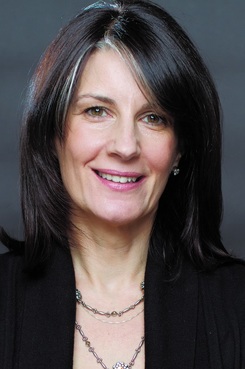Five Thoughts on Thought Leadership in the Legal Arena
If you spend any time with marketing or public relations folks, you've heard the term—a lot. And for good reason. In today's crowded legal service market, thought leaders stand out.
July 03, 2019 at 01:01 PM
7 minute read
 Meg Pritchard.
Meg Pritchard.
Thought leadership.
If you spend any time with marketing or public relations folks, you've heard the term—a lot. And for good reason. In today's crowded legal service market, thought leaders stand out. Their visibility gets—and keeps—them on the radar of the people who make and influence legal hiring decisions. Thought leaders are who clients turn to, time and again, for help and guidance, and for valuable information and insight.
Sounds like a good thing to be, right? Of course it is!
“Thought Leadership remains one of the single most powerful business development and marketing tools in existence—bar none,” writes BTI's Michael Rynowecer—a.k.a. “The Mad Clientist.” Being a thought leader “gets you new business and commands higher rates. You are an educator. You are a source of new, original knowledge. Leadership means your clients and potential clients will look for your thoughts—and, best of all—USE your thoughts.”
Thought leadership is a win-win for both you and clients. You get more business opportunities, from both existing and new clients, you have an easier time persuading clients to hire you and you can feel comfortable charging higher rates, knowing that clients value your advice and insight. Your clients not only get the benefit of your knowledge and expertise, but they can also feel comfortable that you are working at the leading edge of your practice area because they can see you out there, doing it.
Becoming a thought leader seldom happens randomly and it doesn't happen overnight. Here are some thoughts on how you can get there, with a little time and effort.
- Thought leadership is two words.
We know the clear benefits of establishing yourself as a thought leader, but what—exactly— does a thought leader do? Thought leaders develop deep expertise in areas of importance to their clients, and they make that expertise known by offering thoughtful, forward-looking, valuable information to a targeted audience of clients, prospects and influencers. Thought leaders not only provide answers to their audience's biggest questions and address their most pressing concerns, they help identify what's coming next. Thought leaders frame the discussion, not just react to it.
- Own it, earn it or pay for it? Yes.
You can't really be a thought leader until your expertise is visible to your target audience. So how do you get in front of those people who need what you have to offer? By using a combination of owned, earned and paid media. These three categories have been around for a long time, and they remain relevant even in our digitally driven marketplace. The good news is that technology has opened up more channels in each category. The challenge is finding the right channels to maximize your reach and engagement.
Owned media includes all of the channels that you control (and typically don't need to pay others to use)—your website, blogs, social media channels and email. Earned media used to be the holy grail of public relations: publications controlled by others in which you have to earn visibility—either by being quoted as a trusted source, written about for something you did (hopefully positive), or by contributing an article, op-ed or column. Today, the category is broader and therefore even more important—because it includes the various channels for clients and peers to comment on, review, refer and recommend you. Likewise, paid media used to refer primarily to advertising, but now involves a broader category of channels you have to pay to leverage, including sponsorships, paid searches and “pay-to-play” publications.
- The key is content.
The three categories of media—and the various channels included under each—all run on content, whether it's content you created, contributed to, or curated for others. While the channel dictates the form and substance of the content, there is broad overlap, which gives you the ability to distribute the same content widely. For example, you can post a video in which you talk about issues you see on the horizon for your clients on your website and YouTube channel, but don't stop there. Leverage it across your social media channels by including links in your LinkedIn and Facebook posts, and in your tweets; put together an email campaign letting clients and contacts – including those in the media—know about it; and tie it in with any other relevant digital assets, like your bio, practice pages, and firm annual report.
A mix of content, in topic, length and medium, is key. Written content is essential for becoming a thought leader and ideally should include a mix of longer articles, shorter alerts or blog posts, social media posts and emails to clients and contacts. But don't forget other mediums as well—for example, infographics, videos, webinars and live speaking events. Breaking news—U.S. Supreme Court decisions, new legislation and regulatory developments, for example—makes good topics for your content, but comes with some challenges. It puts you in reactive, not proactive, mode—and thought leaders need to demonstrate that they are forward-thinking and insightful. Simply reporting on the news makes you a commentator, not a thought leader, so you'll need to think carefully about how to add value for your readers. And the news cycle is short—unless you have some really fresh insight to offer, you'll need to be at the front of the pack in creating content around a news event. Your content mix should also include evergreen topics—topics don't go out of date, get stale, and are always relevant to your clients. Of course, the key to content on an evergreen topic will be your fresh take on it. In other words, the topic may be of long-standing interest, but your content around it will be thought-provoking and insightful.
- Check your calendar—your editorial calendar.
An editorial calendar is your best tool for staying on track with your thought leadership efforts. I like a good, basic spreadsheet that I can update electronically, but you can use any form that works for you. A basic editorial calendar sets out the topics, medium and channels for your content. It also includes deadlines and any other important dates driving your content—dates tied to your topics (for example industry or client events, dates new legislation goes into effect), and deadlines for research and drafting—and tracks tasks and responsibilities for you and anyone working with you—your PR person or agency, editors of publications, or video productions companies, for example. The more complex the content projects you undertake, the more detailed your editorial calendar will be.
- Visibility expands exponentially.
While becoming a recognized thought leader doesn't happen randomly or overnight, your visibility will expand exponentially, not linearly, with each effort that you make. Today's digitally driven landscape all but assures content that starts in one channel spreads across others— sometimes organically and sometimes with a little push from you. The key is to get started.
Meg Pritchard, the principal of CREATE: Communications—Media—Marketing, is a lawyer, writer and marketing professional who works with law firms and lawyers to develop compelling content for their marketing and business development. She can be reached at [email protected] or 215-514-3206.
This content has been archived. It is available through our partners, LexisNexis® and Bloomberg Law.
To view this content, please continue to their sites.
Not a Lexis Subscriber?
Subscribe Now
Not a Bloomberg Law Subscriber?
Subscribe Now
NOT FOR REPRINT
© 2025 ALM Global, LLC, All Rights Reserved. Request academic re-use from www.copyright.com. All other uses, submit a request to [email protected]. For more information visit Asset & Logo Licensing.
You Might Like
View All

Pa. Superior Court Rules Pizza Chain Liable for Franchisee Driver's Crash
4 minute read
Superior Court Re-examines Death of a Party Pending a Divorce Action
6 minute readTrending Stories
- 1Public Notices/Calendars
- 2Wednesday Newspaper
- 3Decision of the Day: Qui Tam Relators Do Not Plausibly Claim Firm Avoided Tax Obligations Through Visa Applications, Circuit Finds
- 4Judicial Ethics Opinion 24-116
- 5Big Law Firms Sheppard Mullin, Morgan Lewis and Baker Botts Add Partners in Houston
Who Got The Work
J. Brugh Lower of Gibbons has entered an appearance for industrial equipment supplier Devco Corporation in a pending trademark infringement lawsuit. The suit, accusing the defendant of selling knock-off Graco products, was filed Dec. 18 in New Jersey District Court by Rivkin Radler on behalf of Graco Inc. and Graco Minnesota. The case, assigned to U.S. District Judge Zahid N. Quraishi, is 3:24-cv-11294, Graco Inc. et al v. Devco Corporation.
Who Got The Work
Rebecca Maller-Stein and Kent A. Yalowitz of Arnold & Porter Kaye Scholer have entered their appearances for Hanaco Venture Capital and its executives, Lior Prosor and David Frankel, in a pending securities lawsuit. The action, filed on Dec. 24 in New York Southern District Court by Zell, Aron & Co. on behalf of Goldeneye Advisors, accuses the defendants of negligently and fraudulently managing the plaintiff's $1 million investment. The case, assigned to U.S. District Judge Vernon S. Broderick, is 1:24-cv-09918, Goldeneye Advisors, LLC v. Hanaco Venture Capital, Ltd. et al.
Who Got The Work
Attorneys from A&O Shearman has stepped in as defense counsel for Toronto-Dominion Bank and other defendants in a pending securities class action. The suit, filed Dec. 11 in New York Southern District Court by Bleichmar Fonti & Auld, accuses the defendants of concealing the bank's 'pervasive' deficiencies in regards to its compliance with the Bank Secrecy Act and the quality of its anti-money laundering controls. The case, assigned to U.S. District Judge Arun Subramanian, is 1:24-cv-09445, Gonzalez v. The Toronto-Dominion Bank et al.
Who Got The Work
Crown Castle International, a Pennsylvania company providing shared communications infrastructure, has turned to Luke D. Wolf of Gordon Rees Scully Mansukhani to fend off a pending breach-of-contract lawsuit. The court action, filed Nov. 25 in Michigan Eastern District Court by Hooper Hathaway PC on behalf of The Town Residences LLC, accuses Crown Castle of failing to transfer approximately $30,000 in utility payments from T-Mobile in breach of a roof-top lease and assignment agreement. The case, assigned to U.S. District Judge Susan K. Declercq, is 2:24-cv-13131, The Town Residences LLC v. T-Mobile US, Inc. et al.
Who Got The Work
Wilfred P. Coronato and Daniel M. Schwartz of McCarter & English have stepped in as defense counsel to Electrolux Home Products Inc. in a pending product liability lawsuit. The court action, filed Nov. 26 in New York Eastern District Court by Poulos Lopiccolo PC and Nagel Rice LLP on behalf of David Stern, alleges that the defendant's refrigerators’ drawers and shelving repeatedly break and fall apart within months after purchase. The case, assigned to U.S. District Judge Joan M. Azrack, is 2:24-cv-08204, Stern v. Electrolux Home Products, Inc.
Featured Firms
Law Offices of Gary Martin Hays & Associates, P.C.
(470) 294-1674
Law Offices of Mark E. Salomone
(857) 444-6468
Smith & Hassler
(713) 739-1250






